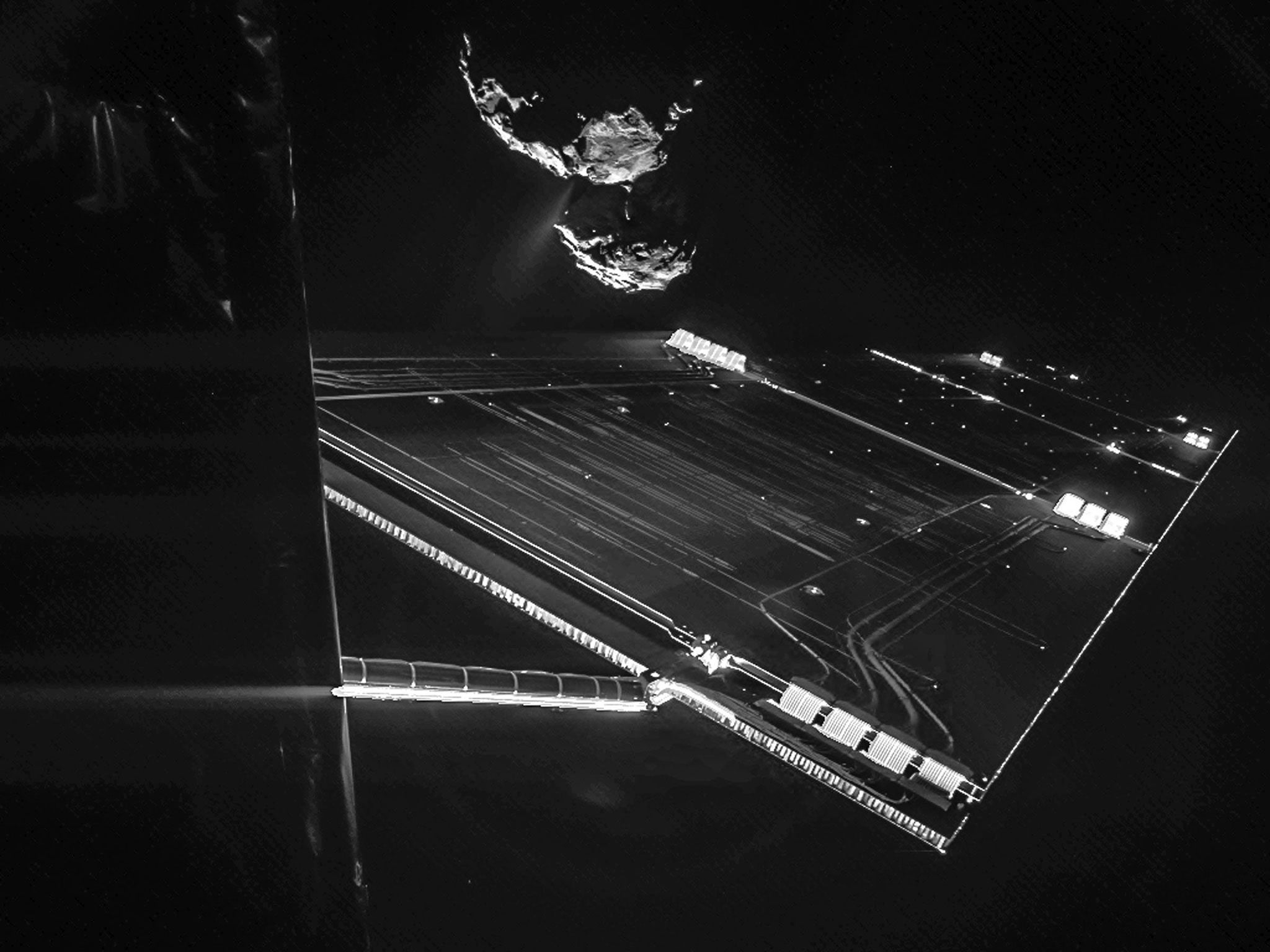Philae lander 'bounced twice' on comet but is now stable, Rosetta mission scientists confirm
ESA had to wait this morning for new data to confirm whether or not ‘third’ landing proved successful

The scientists at the European Space Agency (ESA) faced a nervous wait this morning after it emerged that the history-making Philae probe landed not once but three times on a comet more than 300 million miles from Earth.
However, the ESA confirmed that Philae is now stable, even after magnetic field analysis from the craft reported three separate landings at 15:33, 17:26 and 17:33 - suggesting a high initial bounce and a second smaller one.
"We are sitting with the weight of the lander somehow on the comet," said project manager Stephan Ulamec. "We are pretty sure where we landed the first time, and then we made quite a leap. Some people say it is in the order of 1 km high."
The bouncing was caused by a combination of the comet's incredibly weak gravity and a failure of both the lander's thrusters (which were supposed to push it into the surface) and its harpoons (which were meant to secure it).
Although the probe is now stable, the lack of anchors means that scientists are unsure if they'll be able to drill into the surface to collect samples. Doing so could make the craft unstable and possibly move it across the comet's surface once more.
The fact that the 100kg (220 pound) probe descended some 4cm (1.5 inches) into the surface of the comet was also a concern, suggesting it had landed on a relatively soft top layer of dust.
However, Philae's other instruments and sensors are still operational, with ESA scientist Dr Matt Taylor confirming that they were receiving a "good" signal from the craft, including usable scientific data.
He said: “Now we are busy analysing what it all means and really trying to find out where the lander actually is on the surface.”
Hopefully the probe will remain in place however and Philae will be able to begin several months of experiments, retrieving data about the pseudo-atmosphere of the comet and analysing the surface composition of the craft.
Despite the uncertainty last night, the fact that Philae performed a successful soft landing at all was hailed as one of the greatest achievements in the history of humanity.
“This is the most difficult landing in space history, like landing a balloon in a city centre on a windy day with your eyes closed,” said Matthew Genge, lecturer in earth and planetary sciences at Imperial College London.
Now that it has been confirmed as stable, the Philae lander will travel with the comet as it continues its journey around the Sun. It should witness the plumes of vapourised gases emitted from the icy surface as the comet feels the rising heat of its orbital summer.
And Dr Genge said that this journey, along with Rosetta’s readings from its orbit around the comet, could help answer fundamental questions about the origins of our planet. “Did comets deliver the building blocks of living things and start life on Earth? We may soon know with the help of Rosetta,” he said.
Join our commenting forum
Join thought-provoking conversations, follow other Independent readers and see their replies
Comments
Bookmark popover
Removed from bookmarks